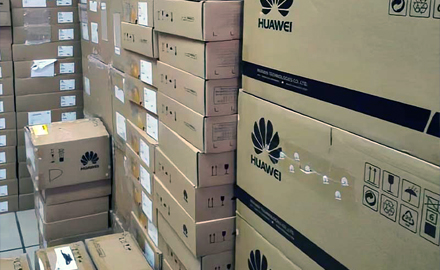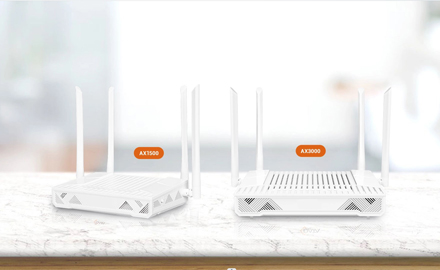The future trend of Optical Line Terminals (OLTs) is shaped by a convergence of technological advancements, evolving market dynamics, regulatory frameworks, and emerging applications. As we look ahead, several key trends are expected to drive the evolution of OLTs and influence their role in next-generation telecommunications networks.
1. Transition to Higher Speeds:
One of the most prominent trends in the future of OLTs is the transition to higher speeds to meet the escalating bandwidth demands of users and applications. As data consumption continues to soar due to trends like video streaming, cloud computing, and the Internet of Things (IoT), telecommunications providers are under pressure to deliver faster and more reliable connectivity. In response, OLTs are expected to evolve to support gigabit, multi-gigabit, and even terabit speeds, enabling ultra-fast broadband services for residential, commercial, and industrial customers.
2. Adoption of Next-Generation PON Technologies:
Passive Optical Network (PON) technologies, such as Gigabit PON (GPON) and 10-Gigabit PON (10G-PON), have been instrumental in enabling high-speed fiber-optic broadband deployments. Looking ahead, the adoption of next-generation PON technologies like XGS-PON (10-Gigabit Symmetric PON) and NG-PON2 (Next-Generation PON Phase 2) is expected to accelerate. These technologies offer increased bandwidth capacity, symmetrical upload and download speeds, and support for advanced services like 5G backhaul, cloud gaming, and virtual reality. OLTs will play a crucial role in supporting these new PON standards and driving the evolution of fiber-optic networks.
3. Convergence of Fixed and Mobile Networks:
The convergence of fixed and mobile networks is a significant trend shaping the future of telecommunications infrastructure. With the rollout of 5G networks, there is a growing need for high-capacity fiber backhaul to support the increased data traffic and low-latency requirements of mobile services. OLTs will play a critical role in enabling this convergence by providing seamless integration between fiber-optic access networks and 5G base stations. By offering flexible and scalable connectivity solutions, OLTs will facilitate the transition towards more integrated and converged network architectures.
4. Focus on Energy Efficiency and Sustainability:
As concerns about energy consumption and environmental sustainability grow, there is a heightened focus on designing energy-efficient telecommunications infrastructure. OLT vendors are expected to prioritize the development of energy-efficient hardware and software solutions to minimize power consumption and reduce carbon footprint. Techniques such as dynamic power management, sleep modes, and intelligent resource allocation will be integrated into OLTs to optimize energy efficiency without compromising performance. Additionally, OLTs will support green initiatives such as remote management and monitoring to further enhance sustainability across the network.
5. Integration of Virtualization and Software Defined Networking (SDN):
The future of OLTs lies in their ability to embrace virtualization and Software Defined Networking (SDN) principles to enhance flexibility, scalability, and agility. By decoupling hardware and software functionalities, OLTs can adapt to changing network requirements and enable dynamic provisioning of services. Virtualized OLTs (vOLTs) and SDN-enabled OLTs will enable operators to deploy network functions as software applications, automate provisioning and management tasks, and optimize resource utilization. This shift towards virtualization and SDN will unlock new opportunities for innovation, cost savings, and service differentiation in the telecommunications industry.
6. Enhanced Security and Privacy Features:
With the proliferation of cyber threats and privacy concerns, OLT vendors will invest in enhancing the security and privacy features of their products. OLTs will incorporate advanced encryption techniques, authentication mechanisms, and access control policies to safeguard sensitive data and protect against unauthorized access. Additionally, OLTs will support compliance with regulatory requirements such as GDPR (General Data Protection Regulation) and CCPA (California Consumer Privacy Act) to ensure the privacy rights of users are respected. By prioritizing security and privacy, OLT vendors can build trust with customers and mitigate the risks associated with cyber attacks and data breaches.
7. Customization and Service Differentiation:
In the competitive telecommunications market, service providers are seeking ways to differentiate themselves and offer unique value propositions to customers. OLT vendors will respond to this demand by providing customizable and scalable solutions that cater to the specific needs of different operators and market segments. Whether it's supporting premium services, Quality of Service (QoS) guarantees, or specialized applications, OLTs will offer the flexibility and programmability to adapt to diverse requirements. By empowering service providers to innovate and differentiate, OLTs will become key enablers of service innovation and revenue growth in the telecommunications ecosystem.
In conclusion, the future trend of OLTs is characterized by higher speeds, next-generation PON technologies, convergence of fixed and mobile networks, energy efficiency, virtualization, security, and service differentiation. By embracing these trends and innovations, OLTs will play a pivotal role in shaping the next generation of telecommunications networks and enabling the delivery of high-speed, reliable, and sustainable broadband services to users worldwide.



 The Difference Between AX1800 ONU and AX3000 ONU
The Difference Between AX1800 ONU and AX3000 ONU
 How are Huawei OLTs Classified?
How are Huawei OLTs Classified?
 The Difference Between ONU and ONT
The Difference Between ONU and ONT
 Deployment Requirements of XG(S)-PON Network
Deployment Requirements of XG(S)-PON Network